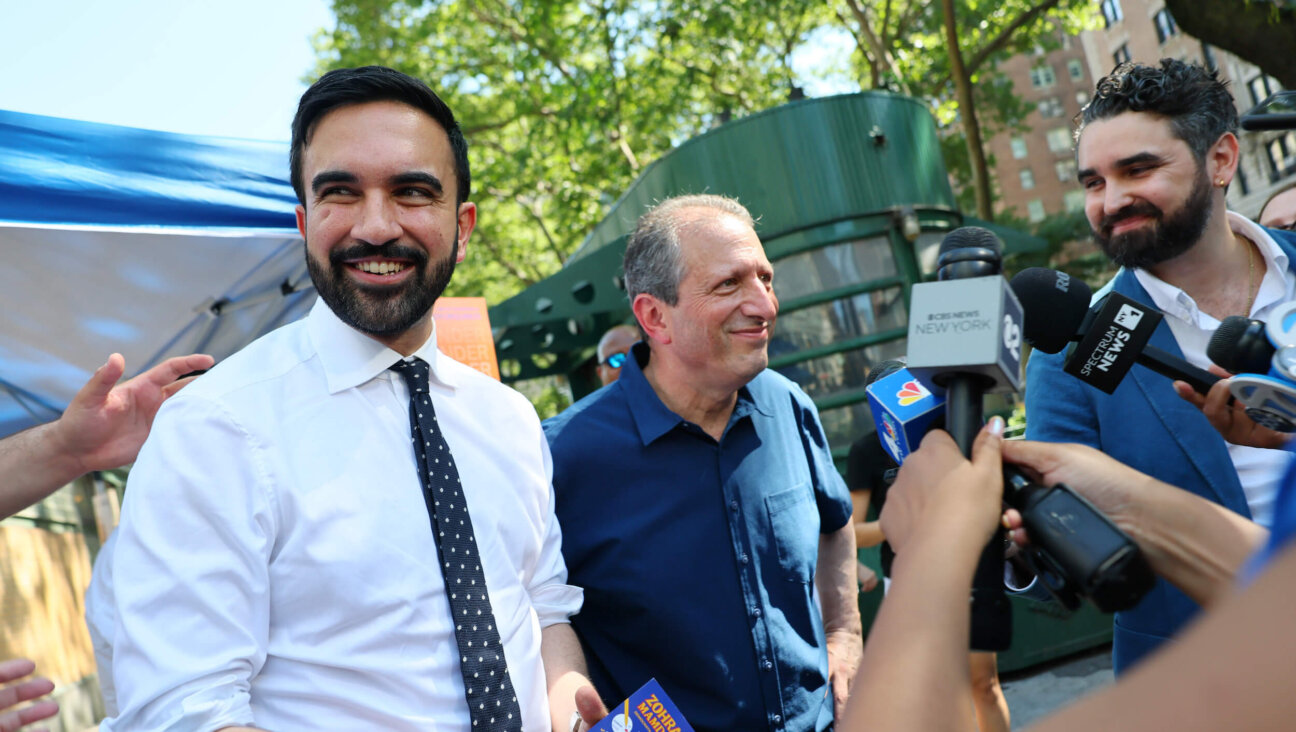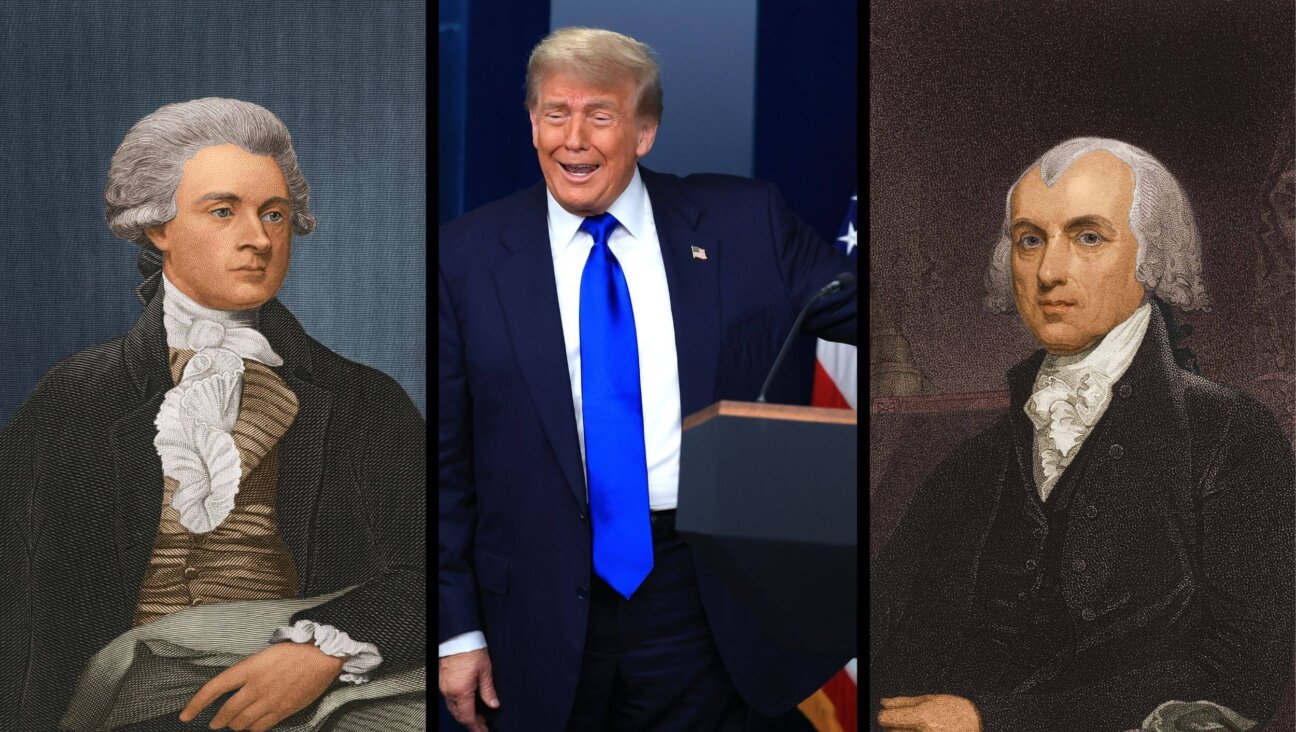Is This Painting Anti-Israel, Anti-Semitic, Both or Neither?

Graphic by Angelie Zaslavsky
Middle East passions are being enflamed again on university campuses, with York University in Toronto as the latest cauldron. In response to a painting hanging in the student union building, Canadian film mogul Paul Bronfman is pulling his company’s support (reportedly totaling “thousands of dollars” of film equipment and training seminars) from the university.
In the foreground of the controversial artwork is a male figure wearing a keffiyeh and a Palestinian flag. Facing what appears to be an Israeli bulldozer about to uproot an olive tree, the man holds a rock behind his back.
Bronfman claims that the painting is And if it were, then there would be a decent case to be made for shaming the university into submission — if you leave aside the fact that, according to a York University spokesperson, the student center is a separate legal entity from the university.
But is the painting actually promoting violence and anti-Semitism, as Bronfman, together with Avi Benlolo of the Simon Wiesenthal Center, suggests?
Given that the target of the stone thrower appears to be a bulldozer, then no, this isn’t a case of promoting violence — at least as defined by bodily harm. And given that a bulldozer in this context represents the engines of occupation rather than an intrinsic aspect of Israel itself, neither can the painting be said to be anti-Semitic or even anti-Israel. (The map the figure is wearing on his shoulder — a map lacking the Green Line that divides Israel from the West Bank — is probably the most problematic aspect of the painting. And yet, that is a small detail all but ignored in the current controversy; it is also a feature of many maps produced by mainstream Jewish and Israeli institutions.)
What’s more, if you do believe that any form of stone throwing is illegitimate, you could actually interpret the painting as impugning the reputation of Palestinians — casting them as violent savages — in an ironic parallel to the controversial 2009 Israel Apartheid Week poster at Carleton University in Ottawa. That poster depicted, in cartoon form, the Israeli air force aiming a missile at a Palestinian child. It was self-identifying pro-Israel groups, not Palestinians and their supporters, who objected to that poster. (The university’s administration later banned it.)
But that ironic twist is certainly not what Bronfman and Benlolo are implying.
We also need to consider the location of the painting. Academic freedom notwithstanding, we expect a certain kind of scholarly decorum in a classroom. Professors aren’t generally given the opportunity to decorate their lecture halls and seminar rooms. But if we were, I would not hang that painting, or an Israeli or Palestinian flag, or a map that omits the Green Line — unless I was doing so to provoke and lead a strictly scholarly interrogation around messages and meanings.
But a student union building is a place of coarser speech, of freewheeling and sometimes messy political and artistic expression. Sometimes that expression can appear naive, crude or polarizing. But it’s what extramural discourse — especially led by a student body whose majority has just passed their teenage years — tends to be about.
So here’s my question to Bronfman: If you acknowledge that the painting says nothing about hurting civilians and does not peddle Jew hatred, and if you acknowledge the basic facts of the occupation — that there are two systems of law in the West Bank, one for Israelis, another for Palestinians; that land is all too often and unjustly expropriated by the Israeli military; that Palestinian freedom of movement is hampered — then the question remains: Which forms of resistance are legitimate? If stone throwing against militarized machinery is not, then what about E.U. labeling of West Bank products? What about non-violent protests along the separation barrier? What about bids at the U.N. to recognize Palestinian statehood?
Something tells me that Bronfman’s act of academic philanthropic divestment is not in fact a comment on the boundaries of hateful discourse. Instead, it’s about the attempt to burnish the image of one side in a tragic overseas conflict, while silencing the other side into submitting to the status quo. As an executive in the field of film — a medium all about communications and expression — Bronfman owes it to us to be clearer about his message.
Mira Sucharov is associate professor of political science at Carleton University in Ottawa, Canada.






















